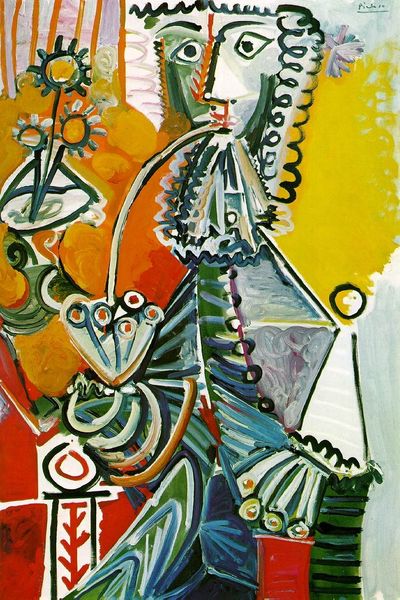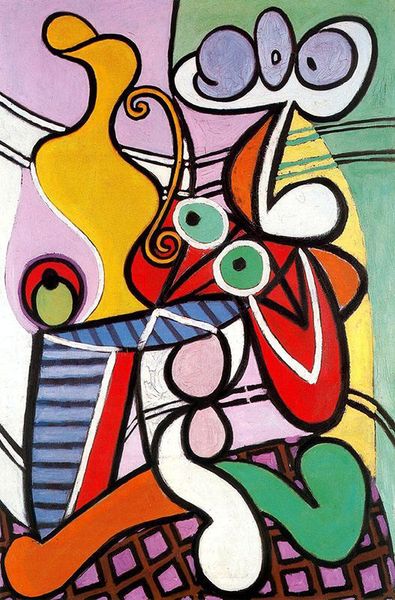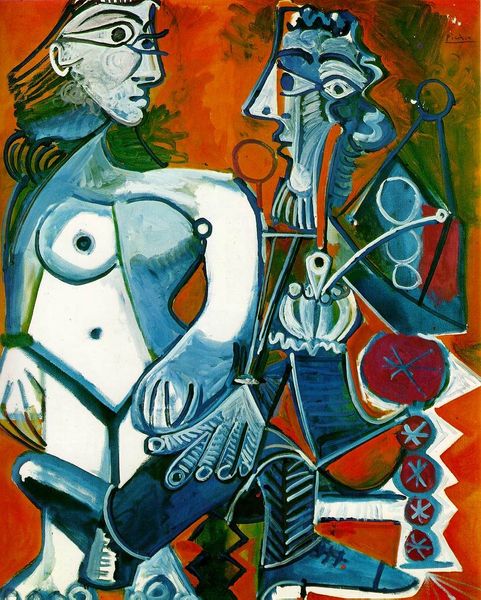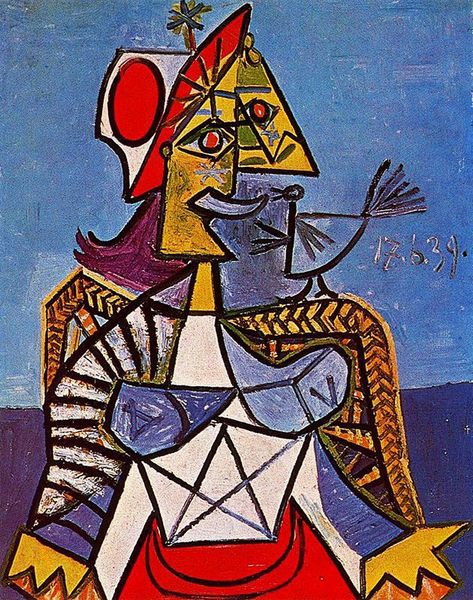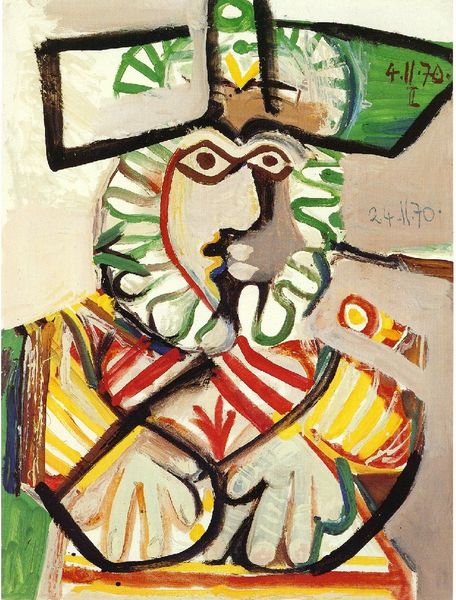
Dimensions: 100 x 73 cm
Copyright: Pablo Picasso,Fair Use
Curator: Picasso created "An Artist" in 1963. It's an oil on canvas, a late self-portrait brimming with his signature cubist style. Editor: My initial reaction is a vibrant chaos! The painting feels very energetic, almost unsettling, with its clashing colours and fragmented forms. There’s a real intensity there. Curator: Indeed. Consider the period. Picasso painted this in his eighties, relatively late in life. The social climate of the 60s, with its questioning of authority and established norms, surely influenced his artistic expression. Think about the ways he fractures the figure, refusing to present a singular, coherent self. It challenges notions of a fixed identity. Editor: I see that fragmentation as defiance. He's dismantling traditional portraiture, and maybe even dismantling his own public persona. The palette of colours itself—those aggressive reds and greens—speaks to a certain rage against time. I also wonder if there's some meta-commentary here; the "artist" in the painting is set against what he might be working on, but neither are exactly presented for clear reading or identification. Curator: The political context becomes relevant, particularly when we consider the prevalent cultural attitudes toward aging and artistic relevance. Was Picasso feeling the pressure to remain innovative? His manipulation of form, the almost cartoonish rendering of his features, can be viewed through the lens of challenging those expectations, maybe even mocking them. Editor: Absolutely. It’s a powerful statement, wrestling with his legacy while refusing to be confined by it. The work becomes less about depicting a likeness and more about deconstructing the idea of "Picasso" as an artistic brand or identity, perhaps reclaiming a space to experiment late in his career. The palette also features bright yellow and violets and makes me think of a fauvist or even post-impressionistic moodiness—he revisits past art movements to reinvent them! Curator: He's actively resisting the art world’s attempts to define him, a rejection we can interpret through feminist theory, particularly regarding the male gaze. He seems to be confronting and subverting the viewer's expectations of a male artist’s self-representation. Editor: It all leads to this really raw, almost desperate energy. A bold declaration that he’s still here, still creating, and still pushing boundaries, regardless of age or expectations. Curator: So it is: An important look at not just art history, but at the context of what makes an image iconic in relation to broader cultural discussions on identity, power, and artistic expression.
Comments
No comments
Be the first to comment and join the conversation on the ultimate creative platform.


